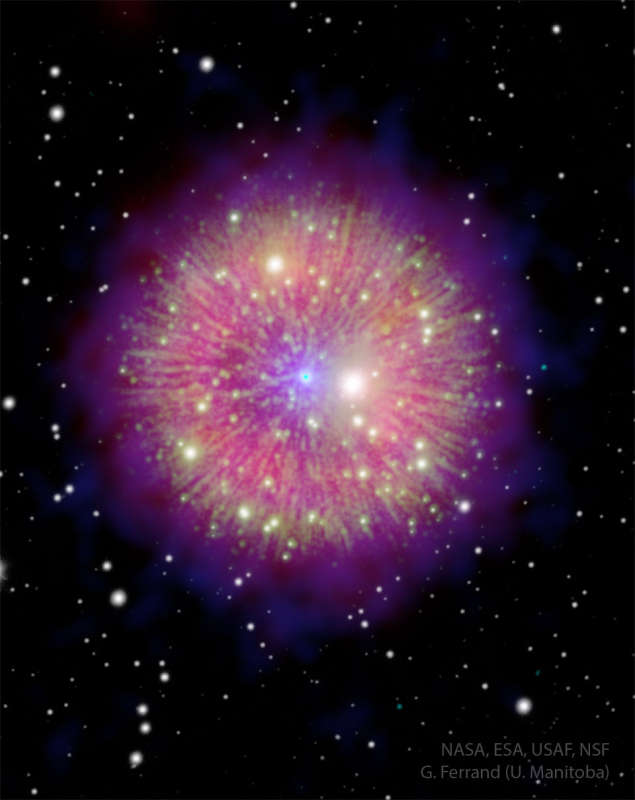Credit & Copyright: NASA,
ESA,
USAF,
NSF;
Processing:
G. Ferrand
(U. Manitoba),
J. English
(U.
Manitoba),
R. A. Fesen
(Dartmouth),
C. Treyturik (U. Manitoba);
Text: G. Ferrand & J. English
Explanation:
What created this unusual celestial firework?
The nebula, dubbed
Pa 30, appears in the same
sky direction now as a bright
"guest star" did in the
year 1181.
Although Pa 30's filaments look similar to that created by a nova
(for example GK Per),
and a planetary nebula (for example
NGC 6751), some astronomers
now propose that it was created by a rare type of
supernova:
a thermonuclear Type Iax, and so is (also) named
SN 1181.
In this model, the supernova was not the result of the
detonation of a single star, but rather a blast that occurred when two
white dwarf stars
spiraled together and merged.
The blue dot in the center is hypothesized to be a
zombie star, the remnant white dwarf that
somehow
survived this
supernova-level explosion.
The featured
image combines images and data obtained with
infrared
(WISE),
visible
(MDM,
Pan-STARRS),
and X-ray
(Chandra, XMM) telescopes.
Future observations and analyses may
tell us more.
NASA Coverage:
Total Solar Eclipse of 2024 April 8
1999 2000 2001 2002 2003 2004 2005 2006 2007 2008 2009 2010 2011 2012 2013 2014 2015 2016 2017 2018 2019 2020 2021 2022 2023 2024 2025 |
Yanvar' Fevral' Mart Aprel' Mai Iyun' Iyul' Avgust Sentyabr' Oktyabr' Noyabr' Dekabr' |
NASA Web Site Statements, Warnings, and Disclaimers
NASA Official: Jay Norris. Specific rights apply.
A service of: LHEA at NASA / GSFC
& Michigan Tech. U.
|
Publikacii s klyuchevymi slovami:
supernova remnant - ostatok Sverhnovoi
Publikacii so slovami: supernova remnant - ostatok Sverhnovoi | |
Sm. takzhe:
Vse publikacii na tu zhe temu >> | |
